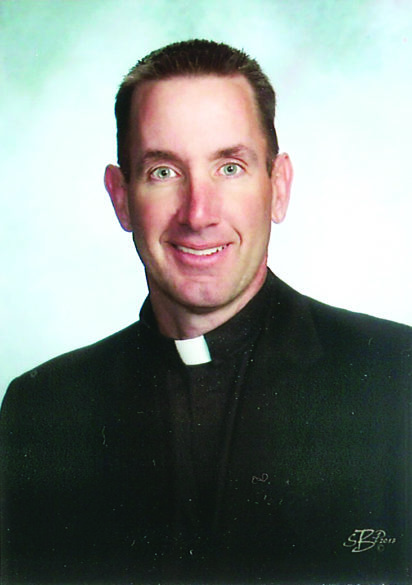
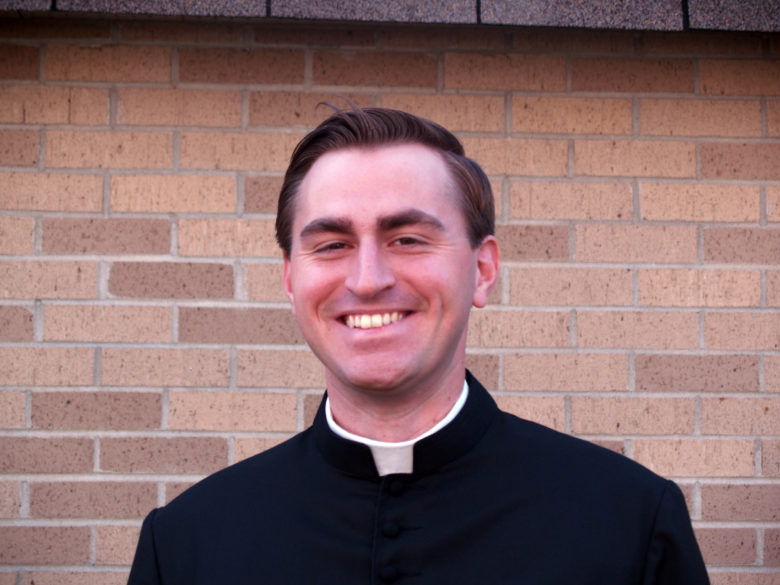
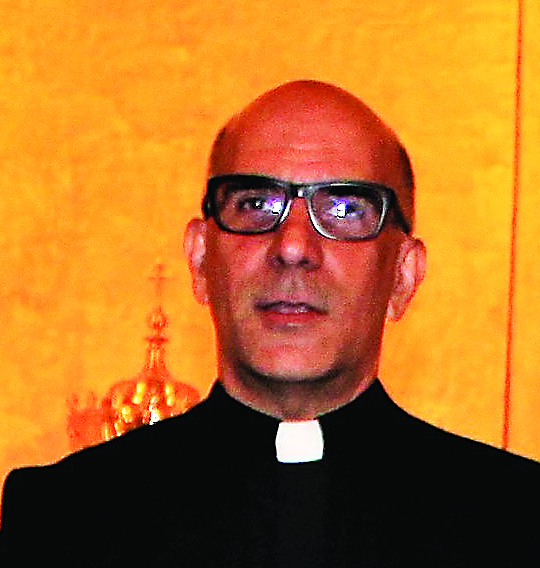
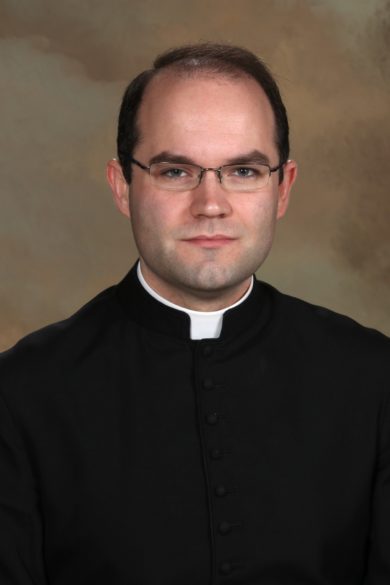




From the Archives
By Mary Woodward
JACKSON – Possibly a little-known fact by most of us is this Easter is the 340th anniversary of the first Mass celebrated on Mississippi soil. In the southwest corner of the State of Mississippi in Wilkinson County, there exists a very important site of church and American history.
On Easter Sunday in 1682, Father Zenobius Membre, an Order of the Friars Minor Recollect priest, celebrated Easter Mass on the bluff above the river near present day Fort Adams as part of Sieur Robert Cavelier de LaSalle’s expedition down the river from Montreal to its mouth.
Although this is the first documented Mass in the area, there is much evidence that the Hernando deSoto expedition in 1540 would have had Masses celebrated in what is now southern Alabama. It is believed by the time the expedition reached the Mississippi, where deSoto died of a mosquito born illness in 1842 near present day Ferriday, Louisiana, the priests travelling with him would have run out of the wine needed for Mass.
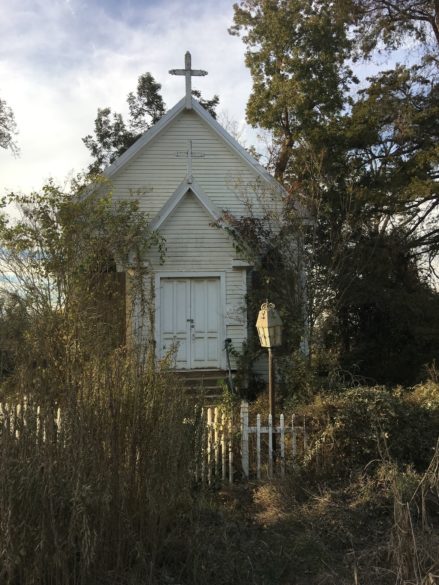
After de LaSalle claimed the territory along the entire river for France and named it Louisiana, the Bishop of Quebec sent missionary priests down the river to evangelize the various tribes of indigenous people. Father Antione Davion was one of these missionaries, who came to the area around 1698 and established a small mission near the site of what is now Fort Adams. He built a small church on the bluff, which became known as La Roche a Davion, and ministered there until he left the mission in 1720.
In 1795, after the Revolutionary War, the United States signed the Treaty of San Lorenzo with Spain, establishing the boundary between Spanish West Florida and the U.S. at Latitude 31 N, a short distance south of Roche Davion. Because of its strategic location on the river, the site became the last military outpost before French territory and served as the port of entry for the United States. The name was then changed to Fort Adams after the President John Adams who was in office at that time.
It is here that in 1801, the Choctaws signed the Treaty of Fort Adams ceding more than 2.6 million acres of Choctaw land to the U.S. When the Louisiana Purchase occurred in 1803, the more than 500 troops on site were moved to New Orleans, but Fort Adams continued to function as a post until the War of 1812.
With time and the river’s changing course, Fort Adams population dwindled as happens in many cases. Those who remained eventually saw the building of a small church dedicated to St. Patrick on the town’s main square in 1900. The church, along with St. Joseph Church built in 1873 were serviced by priests from Natchez mostly until 1940, when St. Joseph was established as a parish again.
Nowadays, Fort Adams has become largely a hunting and fishing camp with only a few houses and two churches remaining, including St. Patrick. Although, the river is now distant from the town, it often visits after a few heavy rains and floods most of the area including the small church, which a few years ago was given to a group of local parishioners devoted to saving the church building. Mass is no longer celebrated there and most of the sacred items are stored safely in higher ground.
On a visit to Woodville and Fort Adams a few years ago, I was given a tour of the area by my dear cousin, Shep Crawford, local lawyer and judge, who has lived in Wilkinson County near Woodville for many years. Shep and I toured Fort Adams on a dry day and were able to see St. Patrick and the almost permanent water line four feet up on the church exterior wall. Pontoons boats were parked on the land adjacent to it. Residents of the area live up on the hillsides that once looked out of the “father of waters.”
We then made our way around to the small hamlet of Pond, which is named so because there is a pond in the middle of it. It includes a small general store and post office and a couple of cabins overlooking the pond.
I have often wanted to return to Pond and one of its cabins to spend a few days steeped in the history of the area. But I also remember Shep casually stating, as we stopped and looked down a road headed south, that 20 minutes down this scenic highway was Angola State Prison. So that was a reality check.
The entire town of Fort Adams was named to the 2021 Ten Most Endangered Places in Mississippi by the Mississippi Heritage Trust. It is recognized for its once pivotal role in the development of borders among nations as our country and state grew into existence.
So, on this Easter Sunday, imagine back 340 years and a missionary journey that brought the sacred mysteries to a small corner of God’s Kingdom. The history is there, and the spirits of the past linger as an inspiration of commitment and dedication to our Catholic Faith. We give thanks to Almighty God for them.
I credit the Heritage Trust website for historical information included in this article. You can learn more about the 10 most endangered places at https://www.10mostms.com/.
(Mary Woodward is Chancellor and Archivist for the Diocese of Jackson.)

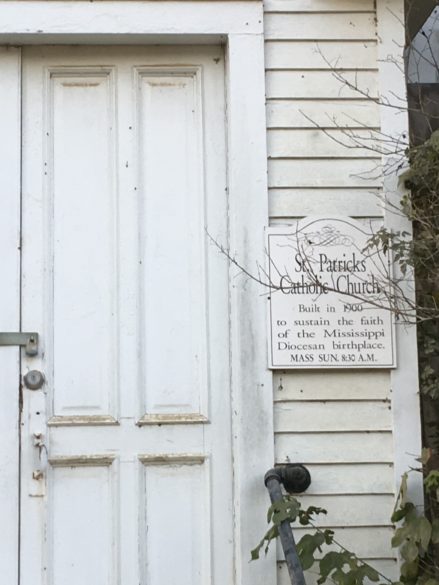

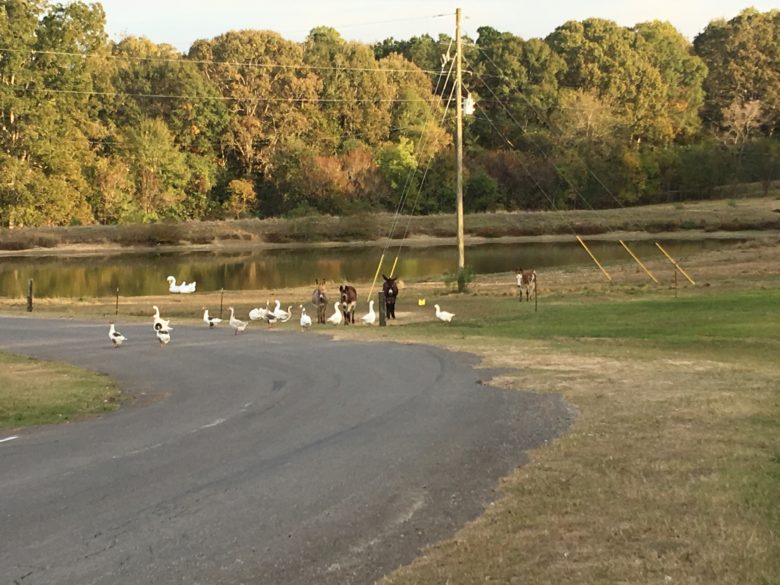
I am pleased to announce that we have a new seminarian enrolling the fall. Mr. Richard Martin, Jr. (EJ) has been accepted to study for the priesthood for the Diocese of Jackson and will be enrolling at Notre Dame Seminary in New Orleans this August. EJ grew up at St. Richard Catholic Church and attended St. Richard and St. Joseph Catholic Schools. After graduating from Spring Hill College in Mobile, EJ was working in Austin, Texas, but discerned that the Diocese of Jackson is where he is called to continue his discernment.
It has been a great gift to walk with EJ, who I had met a few times here and there as he came home to visit family when I was the parochial vicar at St. Richard. I have gotten to know him much better over the past year or so as we have embarked on a ‘pre-discernment’ process which has led him to this point. Our application process for the priestly formation program in the diocese is very involved, but it helps the applicant, and the church, decide whether or not the diocesan seminary is the right place for formal discernment.

One of the aspects of the process which is particularly helpful is the vocations board. This is a group of parishioners from around the diocese (mostly the Jackson area) that agree to meet with an applicant after he has met all the other ‘objective’ requirements for admission. As the vocation director, I provide them with a review of the application process, and then every applicant meets speaks with them about his journey so far. The Board is then invited to ask any questions of the applicant, and of me, about the process and to discuss frankly whether seminary is the right choice for that man. This is a great opportunity for the church to speak with men who, God-willing, will be future priests, and it also gives me perspectives that are extremely valuable which are brought to the Bishop as he decides whether each applicant is a good fit for seminary formation.
I believe God is calling many more men to the seminary than are currently in the seminary, but we almost must be prudent, patient and collaborative in this process. I am so pleased that we have accepted another excellent applicant to study for the priesthood. When we as a church send a man off to seminary, we simply can’t predict whether the Lord will call him ‘all the way’ to the priesthood, but we can do our best to ensure that he is a position spiritually, personally and emotionally to thrive in the seminary program, and whether or not he reaches ordination, he will be an great asset and continue to build up the Kingdom of God in the Diocese of Jackson.
Please keep EJ in your prayers as he embarks on this next step, I am excited to see what the Lord has in store for him, and I know he’ll be a great asset to our excellent group of seminarians!
– Father Nick Adam
If you are interested in learning more about religious orders or vocations to the priesthood and religious life, please email nick.adam@jacksondiocese.org.
POWERFUL PRAYER TO THE HOLY SPIRIT
Come Holy Spirit, fill the hearts of your faithful and kindle in them the fire of your love.
Send forth your Spirit and they shall be created. And You shall renew the face of the earth.
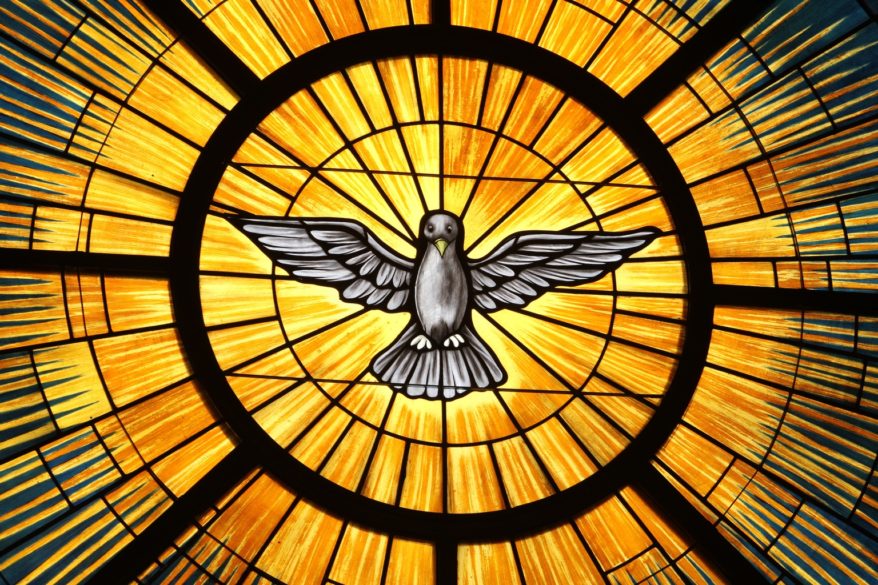
O, God, who by the light of the Holy Spirit, did
instruct the hearts of the faithful. Grant that by the same Holy Spirit we may be truly wise and ever enjoy His consolations,
Through Christ Our Lord, Amen.
STEWARDSHIP PATHS
By Julia Williams
JACKSON – The month of April is dedicated to the Third Person in the Trinity, the Holy Spirit. Every time we recite the Nicene Creed, we worship the Holy Spirit as God.
• The love of the Father for the Son is total. God the Father empties Himself completely, holding nothing back from the Son.
• The love of the Son for the Father is total. God the Son empties Himself completely, holding nothing back from the Father.
• The love of the Father for the Son and the Son for the Father is the Holy Spirit. The love that is the exchange of Persons between Father and Son is the Life that is the Spirit, with no beginning and no end.
Stewardship is a conversion journey of receiving God’s love and returning love to Him. A conversion requires prayer, reflection, and time to allow God to show us who we are and the person of love that we can become.
The apostle Jude reminds us to make every prayer in the Holy Spirit; asking that He be showered upon us. The Holy Spirit is always there and “helps us in our weakness; for we do not know how to pray as we ought, but that very Spirit intercedes with sighs too deep for words.” (Romans 8:26-27)
In your daily prayers, invite the Holy Spirit into your stewardship journey, asking for guidance on how you can share your gifts in love of God and neighbor.
There are many variations of prayers available, but the prayer below is a very popular and powerful prayer.
Together in our journey of stewardship, may God bless us and may we respond as faithful disciples – faithful stewards.
“Commit to the Lord whatever you do, and God will establish your plans” Proverbs 16:3
(To subscribe to the monthly Stewardship PATHS newsletter, scan the QR code. Excerpts: bigcatholics.blogspot.com)

SPIRITUAL ENRICHMENT
JACKSON Cathedral of St. Peter the Apostle, Divine Mercy Holy Hour with Bishop Kopacz for healing and prayers for victims of sexual abuse by clergy and church personnel, Sunday, April 24 at 6 p.m.
NATCHEZ Our Lady of the Oaks ladies retreat at Grand Coteau, Louisiana. The ladies of the Natchez area will be attending their annual three day retreat December 1-4, 2022. You are invited to join us to rest in the care of the Lord in silence, solitude, deep prayer and reflection. It is time to send in deposits ($50) to hold rooms as they fill up quickly. Deposits should be sent in as soon as possible. Details: Kot Morris at (601) 334-8339.
PARISH, FAMILY AND SCHOOL EVENTS
COLUMBUS Annunciation Catholic School, Draw Down/Art Auction on Friday, April 22 from 6:30-11 p.m. at the Trotter Convention Center. Adults only with dinner and open bar. Draw down ticket $100. Art auction ticket $35 at the door. Details: school office (662) 328-4479.
GREENVILLE St. Joseph, Paul and Wadel Abide Memorial Golf Classic, Friday, May 13 with 1 p.m. tee time at the Greenville Golf and Country Club. Following golfing is dinner with beverages. Teams will consist of 4-man scrambles. Sponsorships available. Details: Bonda Abide at (662) 931-0490.
St. Joseph School, Calling St. Joe class of 2002, it’s your 20th reunion. Please update your mailing address, email and phone number to receive all reunion details with Leslie Anderson at leslieabideanderson@gmail.com.
HOLLY SPRINGS St. Joseph, Glorious Dawn Pancake Brunch for all six Northwest parishes on Sunday, April 24 from 1-3 p.m. Sponsored by St. Joseph Youth. Details: church office (662) 252-3138.
JACKSON Sister Thea Bowman Virtual Draw Down, Saturday, April 30 at 3:30 p.m. Tickets are $100 for a chance at $5000 grand prize. Details: contact Shae Robinson at (601) 352-5441.
JACKSON St. Richard Men’s Club, Flight to the Finish 5K and 1 Mile Fun Run will be held at the school/church campus on Saturday, May 7. Details: call (601) 366-1157.
MADISON St. Anthony School, Golf Tournament at Whisper Lake Golf Club, Wednesday, April 27. Details: school office (601) 607-7054.
St. Anthony School, Color Fun Run on Friday, April 29 at 5:30 p.m. Details: school office (601) 607-7054.
MADISON St. Francis, Parish picnic Sunday, May 22 after 10:30 a.m. Mass. Picnic is full of activities for children, along with food and fellowship for all. Details: church office (601) 856-5556.
St. Francis, Floyd Q. Doolittle Golf Classic at Whisper Lake Country Club on Saturday, May 14, with all proceeds going directly to seminarian education. In addition to playing the course, compete in a putting contest and a closest-to-the-pin event. Also enjoy a tasty lunch and a wonderful supper prepared by the Knights of Columbus Council 9543 at St. Francis, and you may win a door prize! Details: Art Ring at (601) 559-8581 or somerville3817@gmail.com if you’d like to play, sponsor or volunteer at the tournament.
MADISON Run Foster Run 10K run/5K walk/1 mile fun run for 12 and under on Saturday, April 30 at 8 a.m. – benefiting the Foster Care Programs of Catholic Charities. Details: Visit raceroster.com/events/2022/58524/run-foster-run.
MADISON St. Joseph School, Bruin Classic Golf Tournament at Annandale Golf Club Monday, May 2. Please register by April 29. Details: Paige Harrison at stjoebruinclassic@gmail.com.
MERIDIAN St. Patrick School, Annual Countdown fundraiser on Friday, April 22. Tickets are $100 for a full ticket but partial tickets can be bought for as little as $25. Grand prize is $5,000. Details: school office (601) 482-6044.
NATCHEZ Cathedral School, 38th Annual Crawfish Countdown Saturday, May 7, 6-10 p.m. Live music by 90 Degrees West. Tickets $120 each and $30 for second chance insurance. Details: more information and tickets available at cathedralgreenwave.com.
JOB OPENINGS
JOB OPENINGS Catholic schools across the diocese have a variety of positions open from assistant principals to substitutes. Please visit https://schools.jacksondiocese.org/education-overview/employment/ for an opportunity near you.
SAVE THE DATE
JACKSON St. Richard, VBS 2022, June 6-9. Online registration open May 1-10. No registrations will be accepted after May 10. Details: church office (601) 366-2335.
MADISON St. Francis, VBS 2022, June 20-24 for all children going into Pre-K4 through fourth grades. Registration will begin in May if enough volunteers sign up to assist with the camp. Details: Mary Catherine at mc.george@stfrancismadison.org.
PONTOTOC St. Christopher Catholic Friendship Camp, ages 7-11, June 12-18; and ages 12-14, June 19-25. Details: Heidi Stephens campsm@juno.com or https://www.campfriendshipmississippi.com.
By Joanna Puddister King
JACKSON – Nearly 30 honorees across at least eight denominations were recognized as pro-life heroes by Her PLAN (Pregnancy and Life Assistance Network) on Thursday, March 17 at Fondren Church in Jackson.
Ranging from sidewalk advocates of Mississippi’s only abortion facility, adoption leaders, pregnancy center leaders and policy champions, these heroes have been at work in the pro-life movement for decades making strides against abortion. Those leaders included several Catholics from around the diocese: Dr. Beverly McMillan of St. Richard Jackson, Tanya Britton of St. James Tupelo, Monica Walton of St. Paul Flowood, Sister Dorothea Sondgeroth, OP of St. Dominic Health Services and Charlene Bearden of Holy Family Jackson and coordinator of the office of family ministry for the Diocese of Jackson.
Anja Baker, Mississippi state coordinator for Her PLAN and parishioner of St. Jude Pearl, said that her reason for having a “Mississippi Moment” with pro-life heroes was two-fold. The first being to reflect and acknowledge all of the hard work that has been done to save the lives of the unborn, but also to talk about preparing for a pivotal moment in history – the possibility of the Supreme Court overturning Roe v. Wade, the 1973 decision legalizing abortion nationwide, with Dobbs v. Jackson Women’s Health Organization, set for a decision in June.
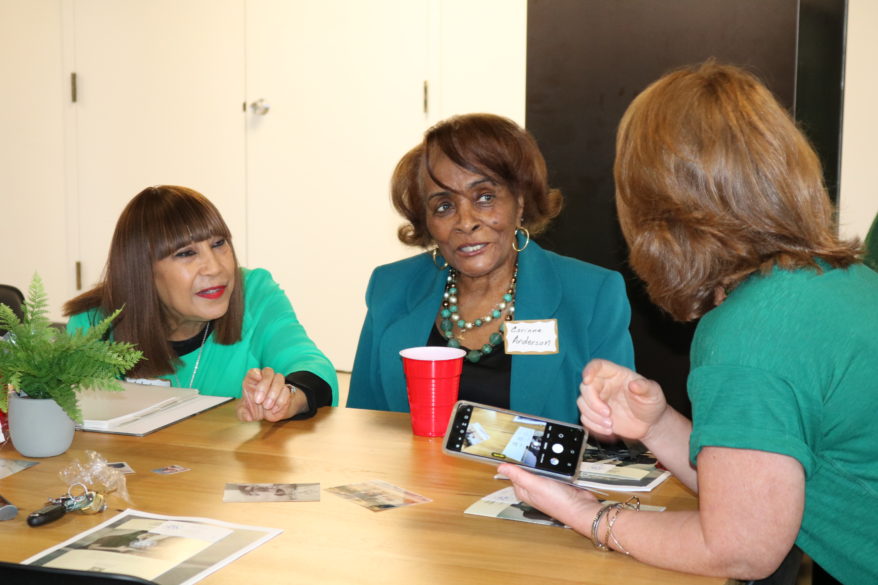
“Regardless of what happens this summer, regardless of what changes in policy, we know that a larger safety net of support is needed,” said Baker.
Born in 1994, Baker got her start in the pro-life movement at age 15 when she saw a “40 Days for Life” flyer in the back of church. This led to attending pro-life banquets and getting involved in Students for Life before eventually working as a coordinator for Her PLAN.
A project of Susan B. Anthony List, Her PLAN also operates in Georgia, Virginia and West Virginia, and facilitates collaboration between assistance providers and their communities to empower women and families through comprehensive medical, social and material support.
At the event, Baker acknowledged all of the work those present had done since Roe, saying “my generation and generations to come have a lot to learn from you. Your voice and your example is the reason we have something to build upon in the first place and the reason … Mississippi is the one everyone is talking about.”
One of those examples is Walton, who was called to be actively pro-life back in high school after her best friend asked her to drive her across state lines to have an abortion. Today, Walton is the executive director for Birthright of Jackson, joining the group as a volunteer in 1994; as well as, office manager for St. Paul Flowood.
“I love the Birthright way of gentle love and care for women struggling with an unplanned pregnancy. We sit with them and listen to their worries – free of judgment, pressure and scare tactics. We make sure they have all the information to make a good decision about the future of their unborn child,” said Walton.
Sitting across from Walton at the event, Bearden’s passion for life was sparked in the 1960s after she and her husband Booker, lost their first child right after her first birthday due to meningitis.
“Bishop Brunini … welcomed Booker and me, and our other two young children into their community of various social and faith formation activities at St. Peter. … I became very interested in the church’s teachings pertaining to social justice, poverty, and the respect for all life,” said Bearden.
Her passion then grew to promote the sanctity of life at the time the Supreme Court instituted Roe in 1973 and after the Congregation for the Doctrine of the Faith released the “Declaration on Procured Abortion” in 1974.
As time progressed, Bearden began praying against abortion outside the abortion clinic. She even worked on a “whole life” front, from 1999-2006 with the Mississippi Department of Human Services to design, develop and support a computer application to track abused, exploited, neglected and adopted children.
Today, Bearden works with the Office of Family Ministry for the diocese, promoting and supporting a variety of pro-life programs. Among a long list of pro-life causes and events, she works with the Knights of Columbus to fund ultrasound machines for pregnancy care centers, collaborates with Catholic Charities of Jackson to respect life through a variety of services, offers support to parishes in the diocese for the USCCB’s “Walking with Moms in Need” program, and provides support and referrals to pregnancy care centers, among many other programs.
Walton and Bearden’s work are just some of the many connections Her PLAN hopes to make in its campaign to create a network of helping hands for new mothers in need.
“What ties us together is the battle to protect the unborn and the women that hold that life within them,” says Baker.
Bearden is also collaborating with Her PLAN to share resources through the diocese for women in need of support, whether it is medical, social or material. Their goal is to help empower women and have them choose life.
Bearden says, “Respect for the dignity of all life and the support of all life, especially pregnant mothers in crisis, is critical to supporting and being pro-life. This is our Christian belief; this is our Catholic belief.”
(To learn more about Her PLAN visit herplan.org.)
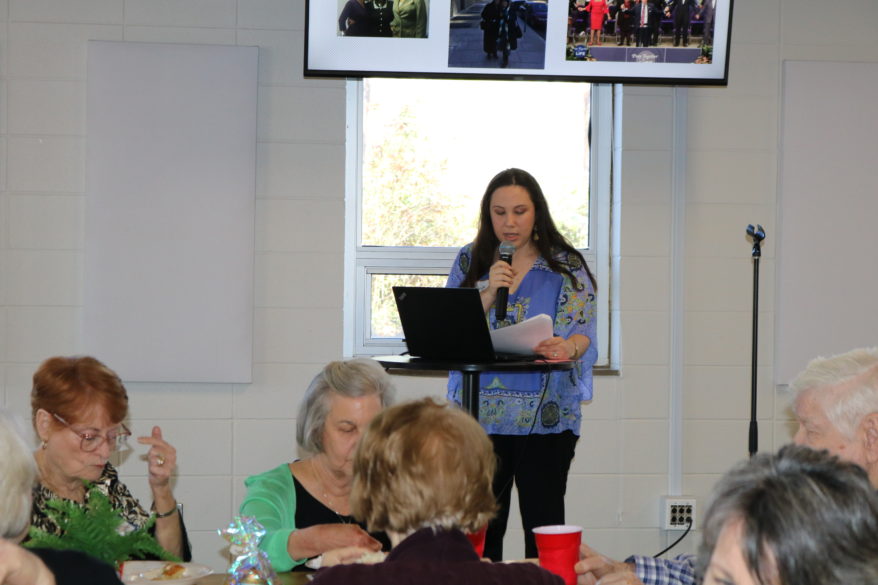
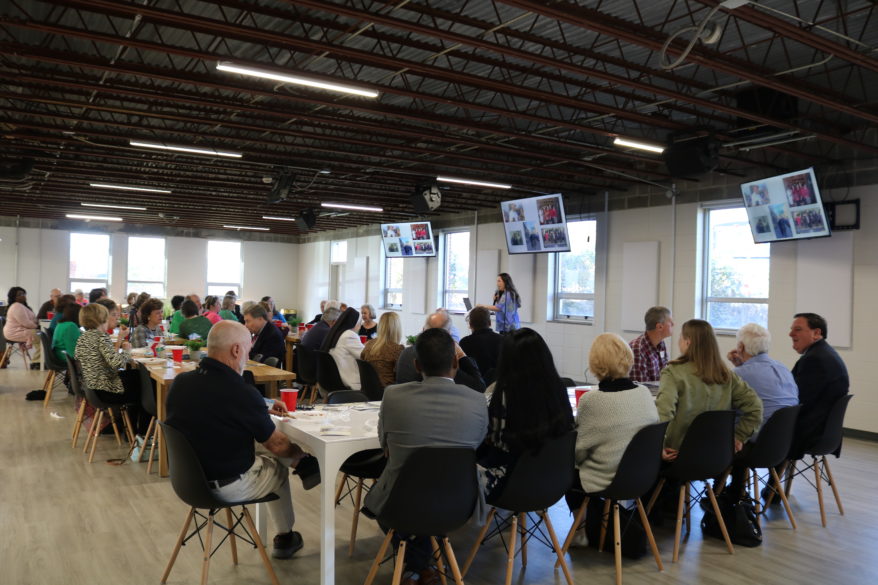
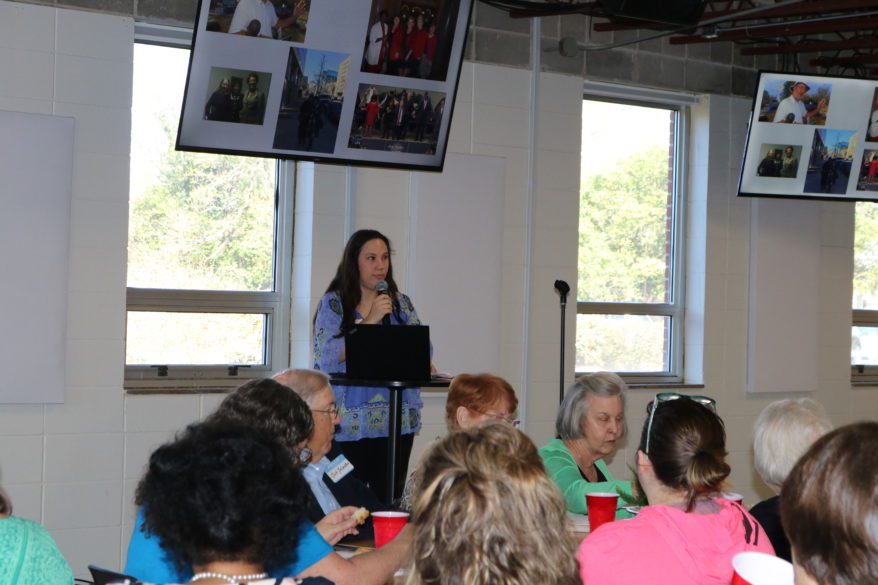
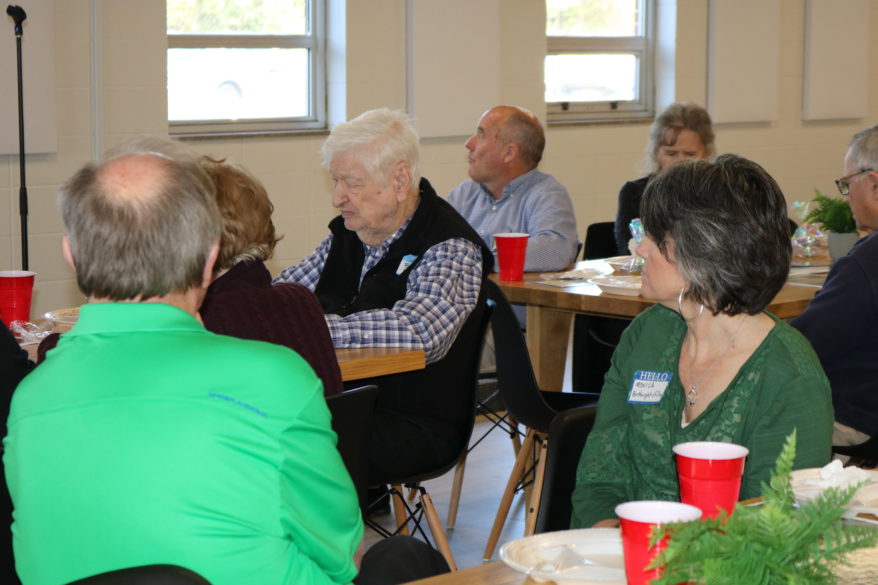
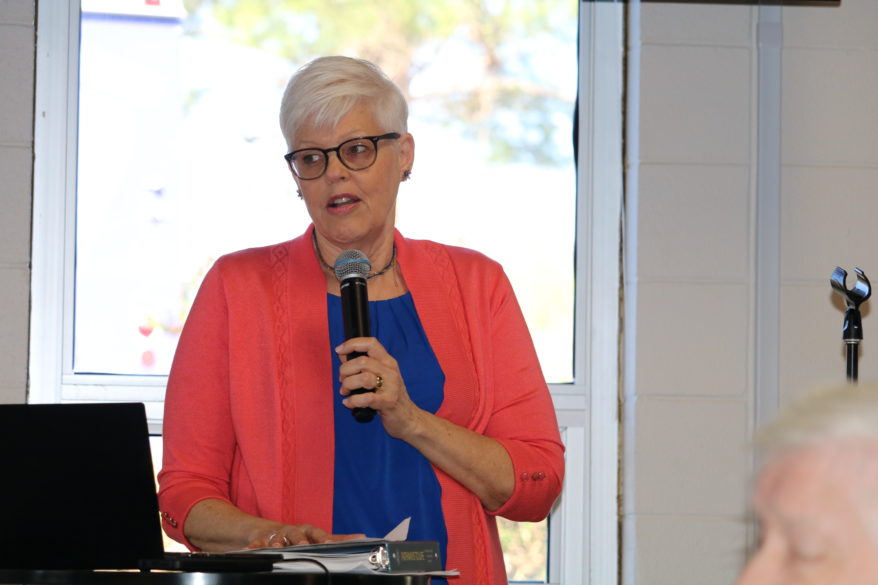
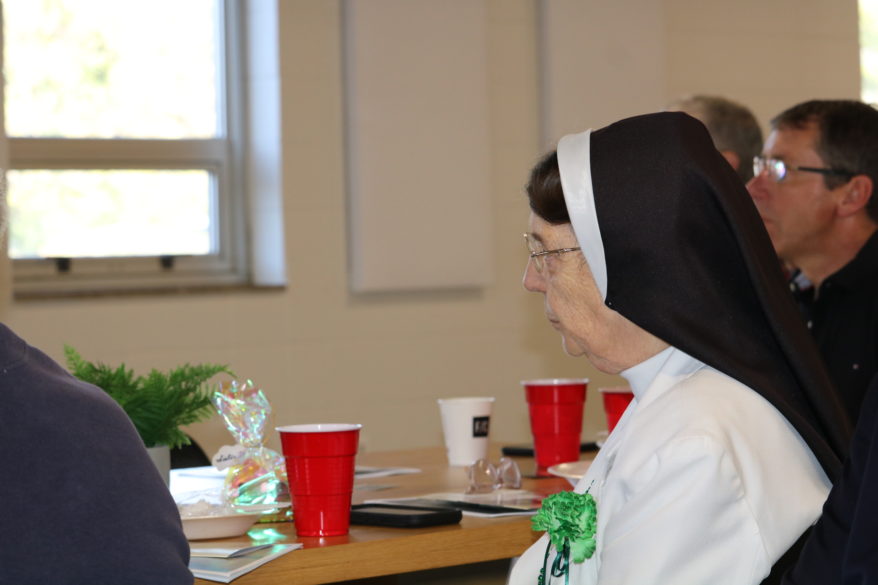
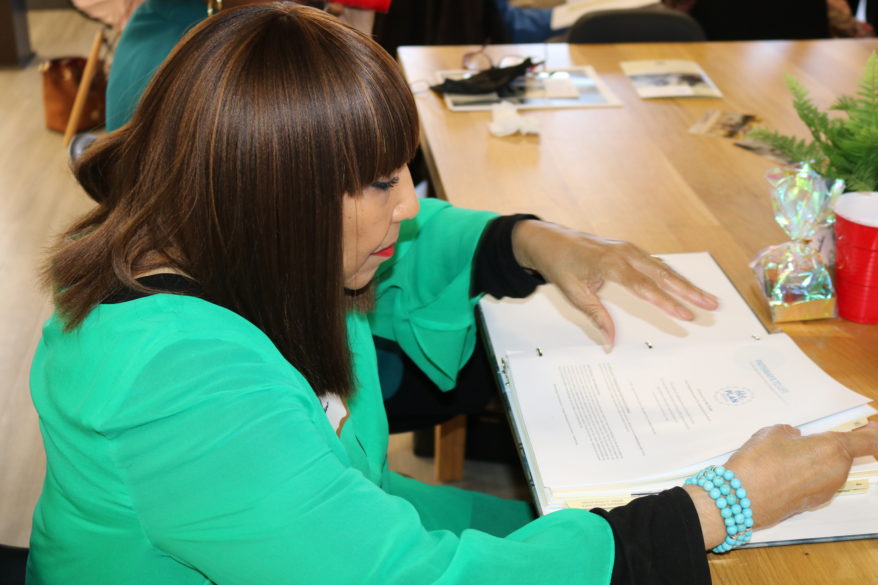
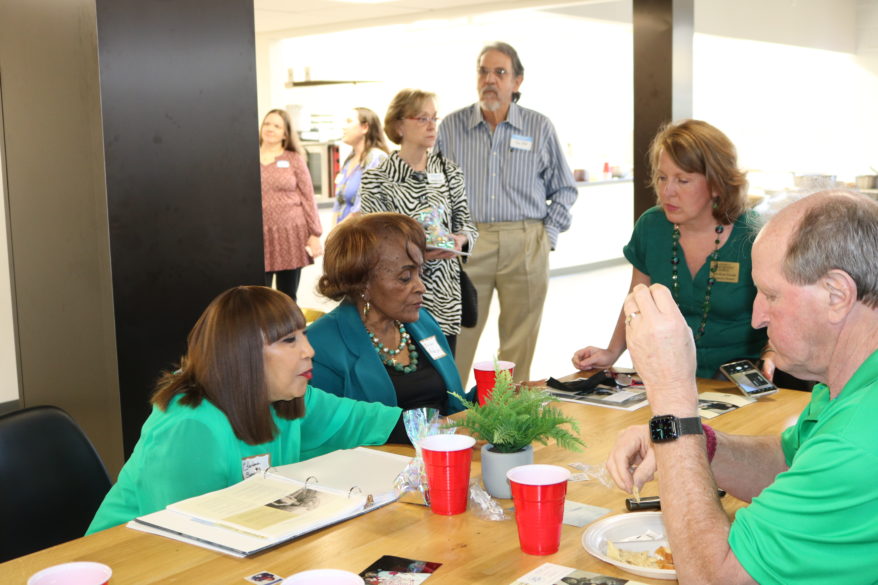
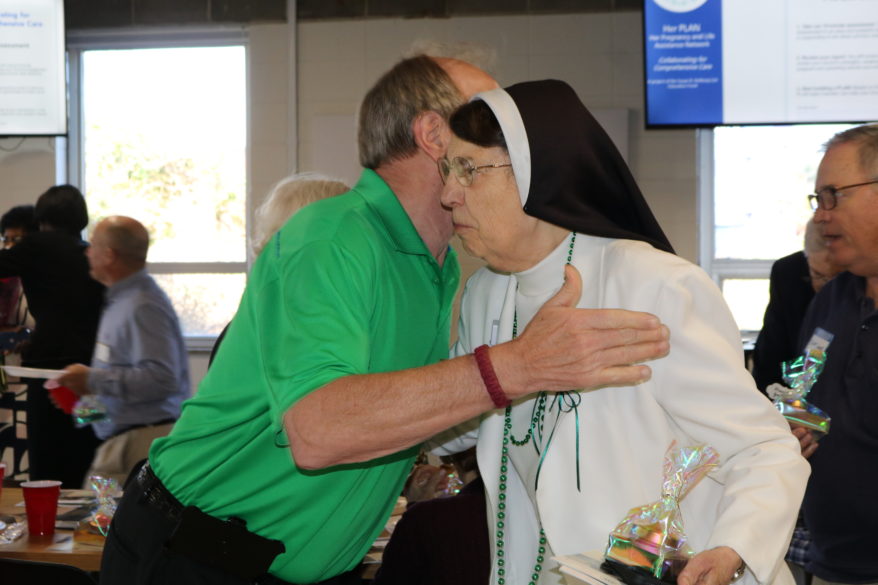
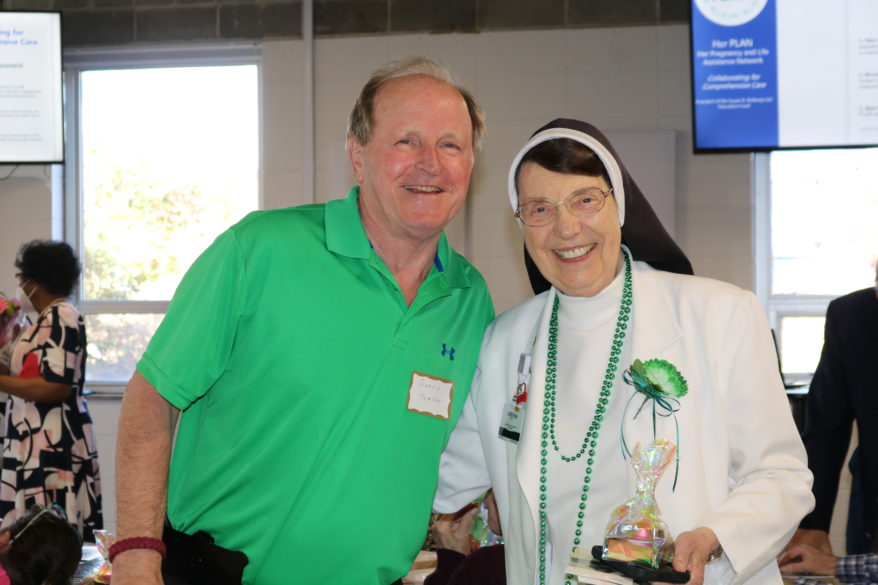
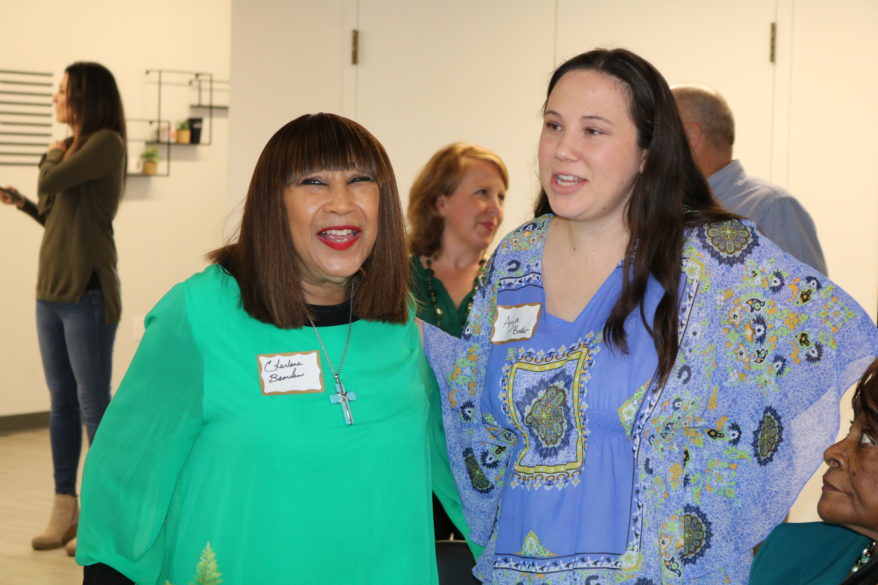
Cada viernes, en dependencia del clima los parroquianos de St Jude Pearl se reunieron, al atardecer, para las estaciones de la Cruz.
Durante toda la Semana Santa las parroquias recordaron la Pasión de Jesús con las estaciones de la cruz y celebraron su resurrección con Primera Comunión.
En las fotos están las representaciones de la Pasión en las parroquias de San Francisco de Asís Madison y el Inmaculado Corazón de Maria, Houston llevado a cabo por el Ministerio de Evangelización de St Christopher, Pontotoc y la celebración de la primera Comunión de Amy Rei Davis y Marion González, después de Misa celebrada por el Padre Binh Nguyen el Domingo de Resurrección, el 17 de abril en la parroquia del Inmaculado Corazón de Maria, Houston.
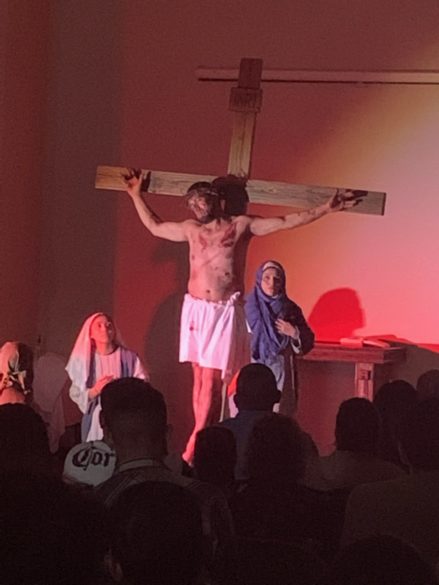
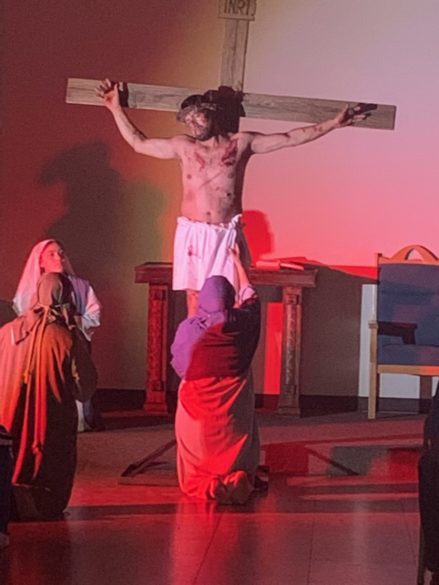

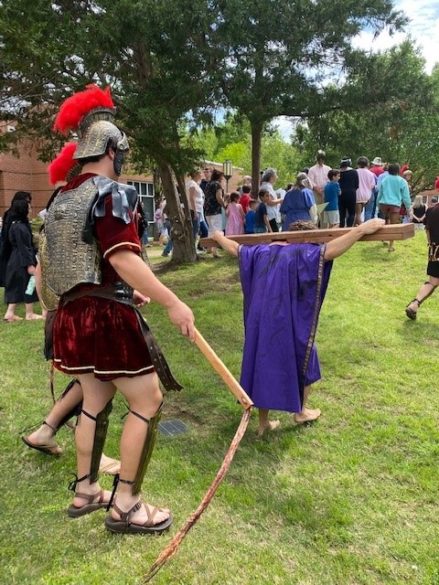
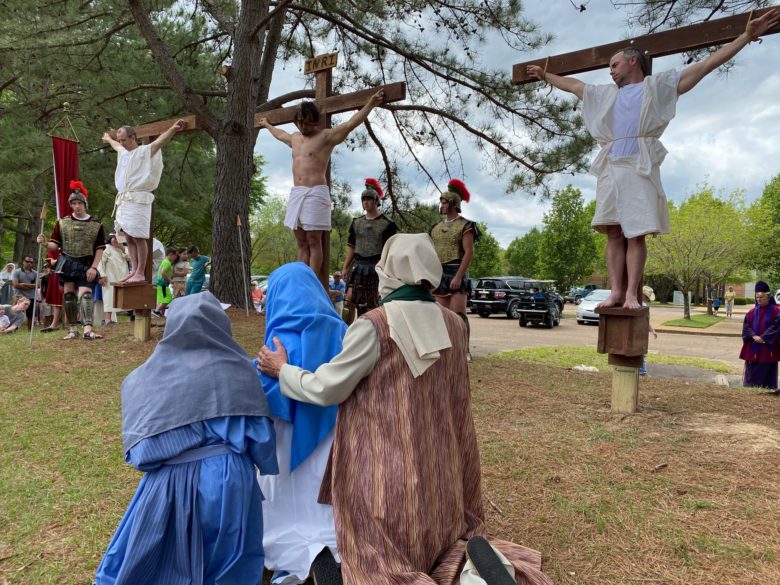
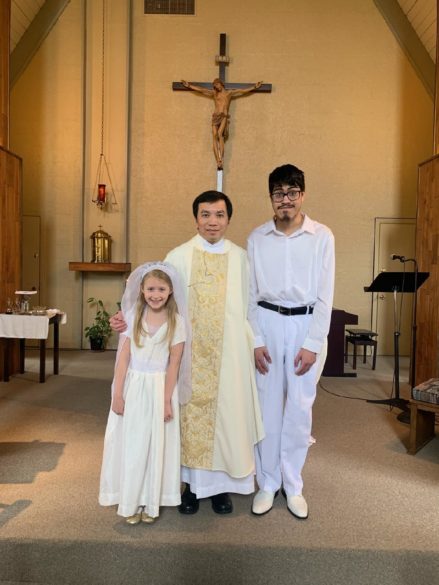
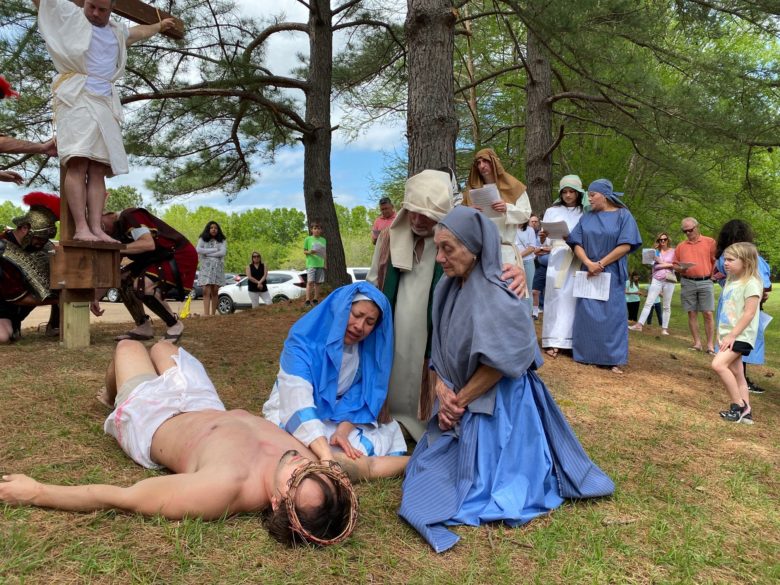
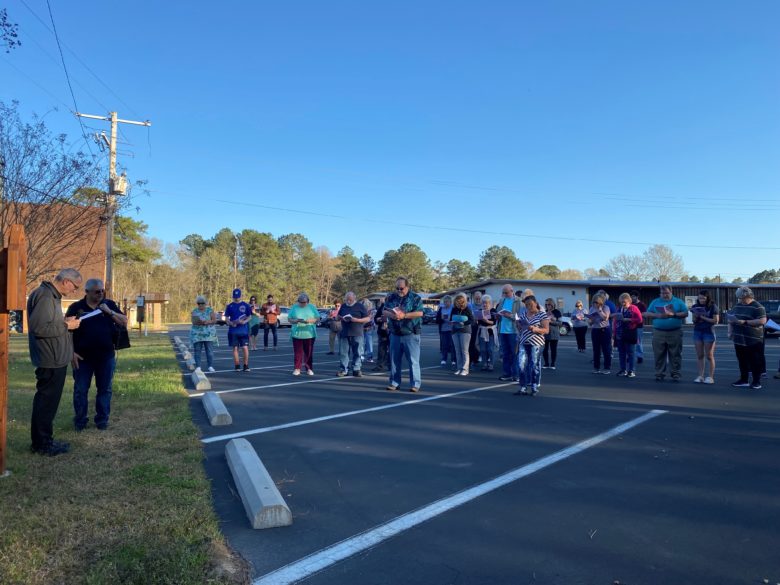
St Jude y St Francis: Fotos de Elsa Baughman y del Inmaculado Corazón de Maria, Houston: Fotos de Danna Johnson
By Joanna Puddister King
VICKSBURG – The annual Diocesan Catholic Youth Conference (DCYC) at the Vicksburg Convention Center was back this year after a hiatus due to COVID. Held from Feb. 18-20, the conference brought together teens from around the diocese for a weekend celebration with the theme “Encounter.”
Diocesan coordinator for the Office of Youth Ministry, Abbey Schuhmann said, “It has been two years since we were last able to gather as a diocese to celebrate our Catholic faith as one large community. It was our great hope that DCYC 2022 was a time to celebrate and encounter each other but more importantly to encounter Jesus Christ through the gift of our Catholic faith.”
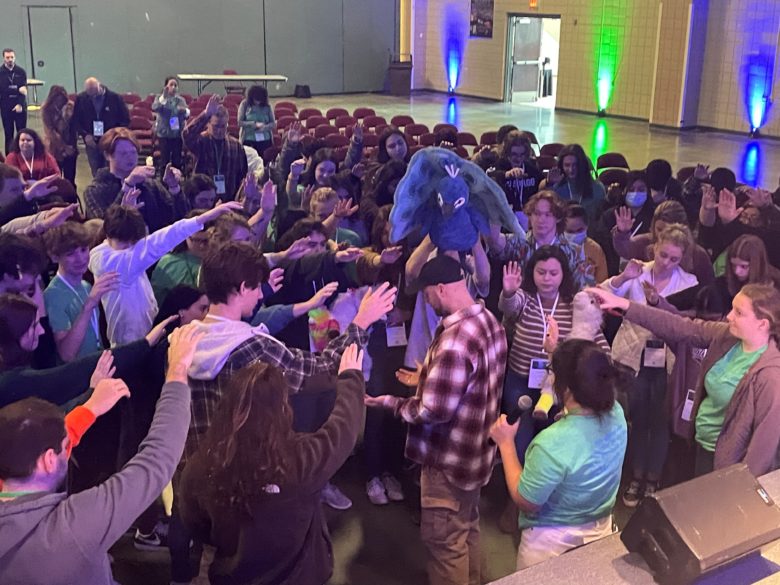
Youth were able to do just that with keynote presenter and recording artist Joe Melendrez, described as one of America’s most exciting Catholic performers. Melendrez got his start performing on MTV at age 15 and encountered the love of God shortly after. He has since dedicated his life to sharing the Good News and sharing the Gospel in unique ways – like his Catholic hip-hop style.
“Melendrez was a very dynamic and high energy presenter; his talks throughout the weekend were very interactive and powerful,” said Schuhmann. “Being a Catholic hip-hop artist, his music provided for very upbeat and entertaining sessions of worship that got all participants, young and old, on their feet and moving to the beat.”
On Saturday of the conference, diocesan vocations director, Father Nick Adam and Sister Kelly Moline, OP, a Dominican Sister of Springfield, Illinois and chaplain at St. Dominic’s Hospital in Jackson, along with diocesan seminarians led a session on discernment on Saturday afternoon. They challenged each participant to continue to seek God’s will in their life and to continue to be open to His call, said Schuhmann.
Other activities during the “Encounter” weekend included small group sessions, games, Mass, Reconciliation, Adoration and a concert with Melendrez on Saturday evening. The weekend concluded with Mass celebrated by Bishop Joseph Kopacz and the presentation of the Bishop Chanche Youth Service Awards to six youth from around the diocese.
This was the fourth year that the conference was held in Vicksburg. Groups from twelve parishes representing five of the six deaneries were in attendance this year. Schuhmann says that plans are already underway for the 2023 conference and invites youth from around the diocese to encounter Christ.
For more information about events sponsored by the Office of Youth Ministry please contact coordinator, Abbey Schuhmann. 601-949-6934 or Abbey.Schuhmann@jacksondiocese.org.
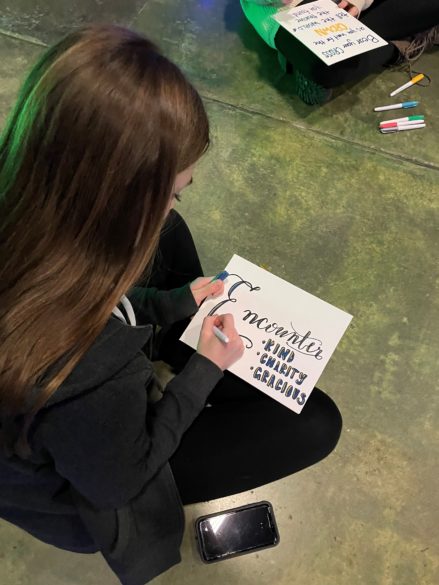
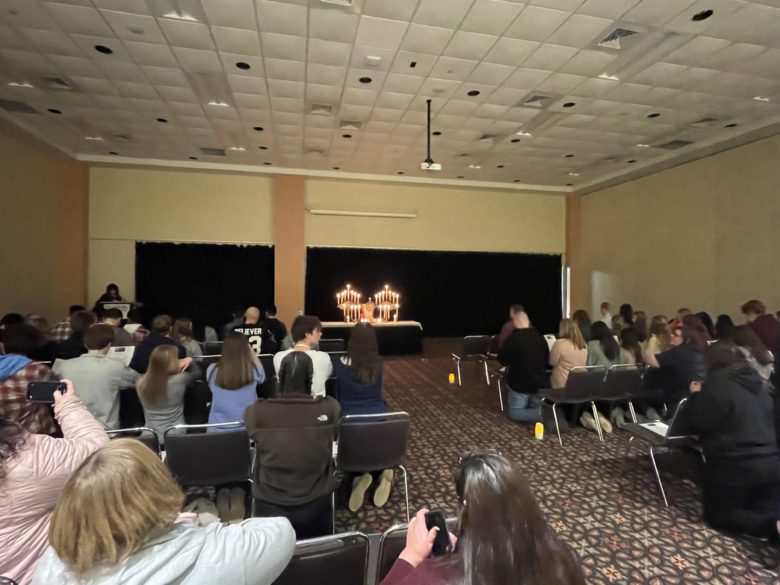
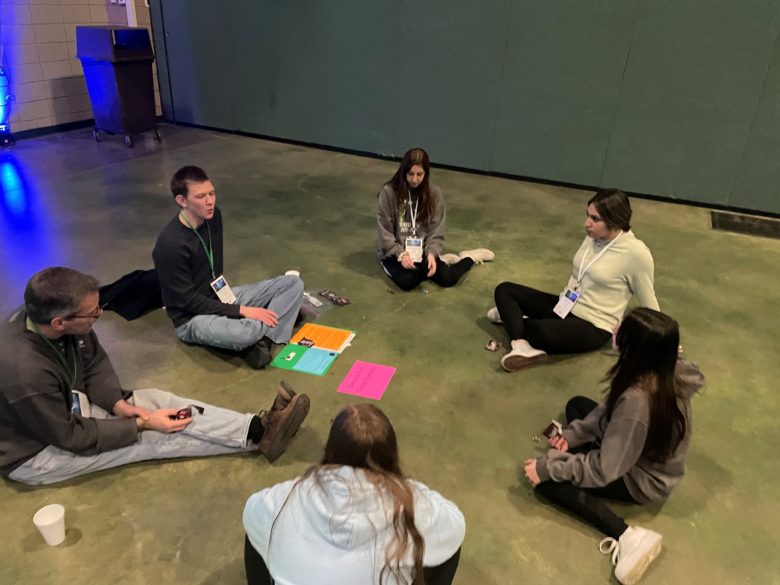
By Joanna Puddister King
JACKSON – The Catholic community in the Diocese of Jackson is continuing Pope Francis’ call for the Synod on Synodality, a period of listening and dialogue to rejuvenate the church. After Bishop Joseph Kopacz opened the synod in October 2021, parishes across the diocese conducted listening sessions to hear from people who fill the pews and thoses who no longer feel connected to the church. From those sessions the Synod advisory council reviewed every submission from each parish that participated and identified core issues on the minds of those across the diocese.
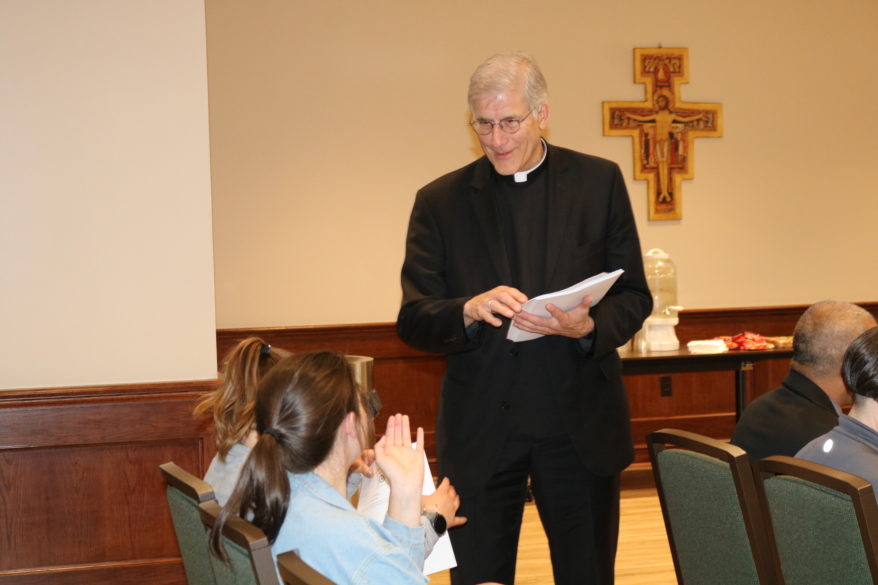
On March 21at St. Francis Madison, at the first of ten regional synod listening sessions with Bishop Kopacz, Fran Lavelle, director of faith formation and chair of the Synod advisory council, reviewed the things that were heard in the Synod listening sessions. These included the need to create community outreach opportunities, both within the church and the larger community; a need for healing with regard to marriages, annulments, LGBTQ, racial and ethnic divisions and the sexual abuse scandal; a need for unity; a way to be inclusive of all cultures and diverse communities; increased formation and education of lay leaders; increased faith formation opportunities for adults; the need for more evangelization efforts; ways to reach the young church; among others.
“What we really want to do is focus on those areas that came up that we can address within the struture of the diocese,” said Lavelle.
During the regional sessions participants are asked to discern three core priorities and how these can be addressed at the local level, giving concrete examples of how the church can successfully address them. Lavelle asked all to “dream” as Pope Francis in his book, Let us Dream: The Path to a Better Future.
The remaining regional sessions include:
– Tuesday, March 29 at St. Jude Pearl (Spanish) from 6:30-8 p.m.
– Wednesday, March 30 at St. Mary Basilica Natchez (English) from 6-7:30 p.m.
– Thursday, March 31 at Immaculate Heart of Mary Greenwood (English) from 5:30-7 p.m.
– Thursday, March 31 at St. Francis Greenwood (Spanish) from 7:30-8:30 p.m.
– Monday, April 4 at St. Patrick Meridian (English) from 6-7:30 p.m.
–Tuesday, April 5 at St. James Tupelo (English) from 6-7 p.m.
– Tuesday, April 5 at St. James Tupelo (Spanish) from 7-8 p.m.
–Wednesday, April 6 at St. Mary Batesville (English) from 6-7:30 p.m.
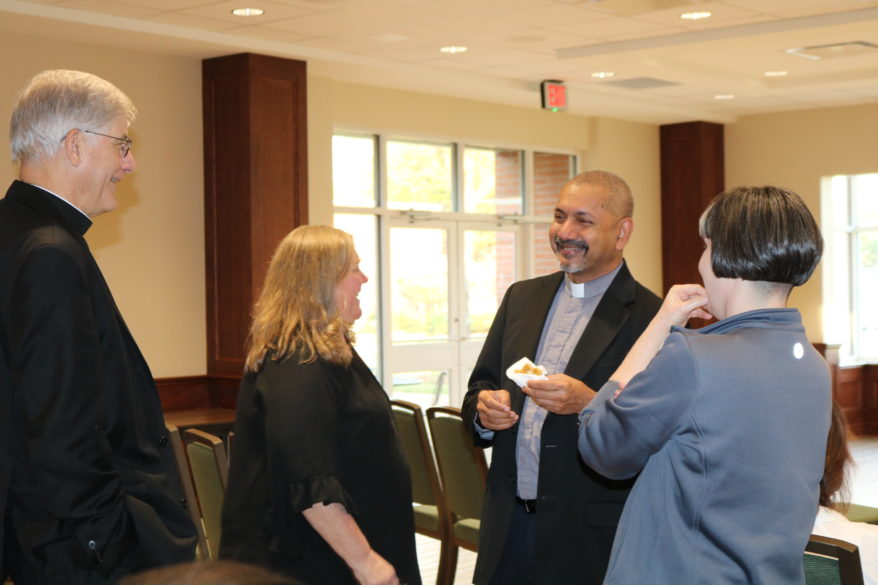
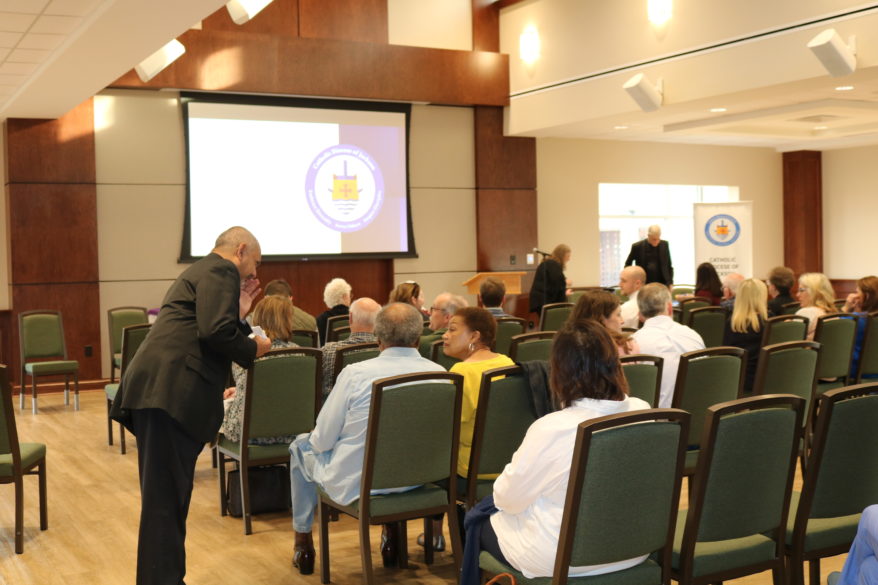
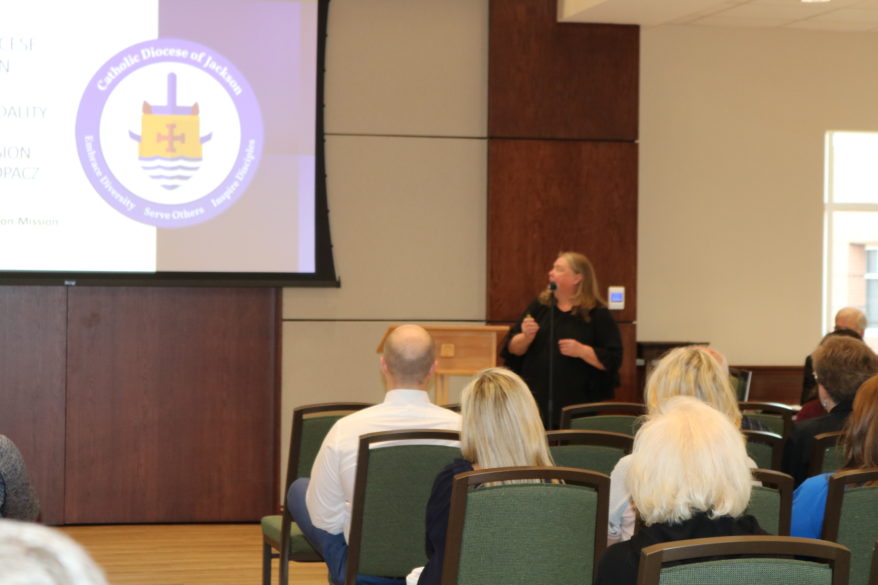
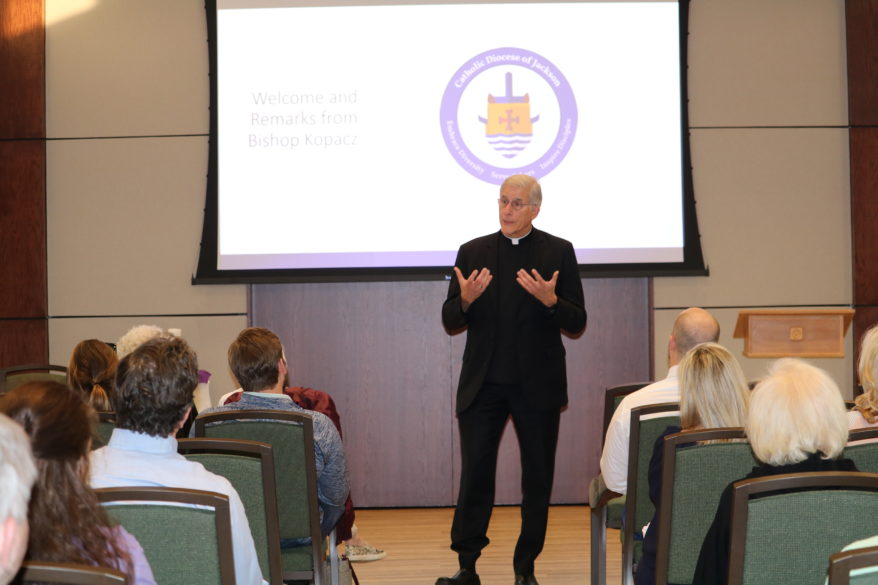
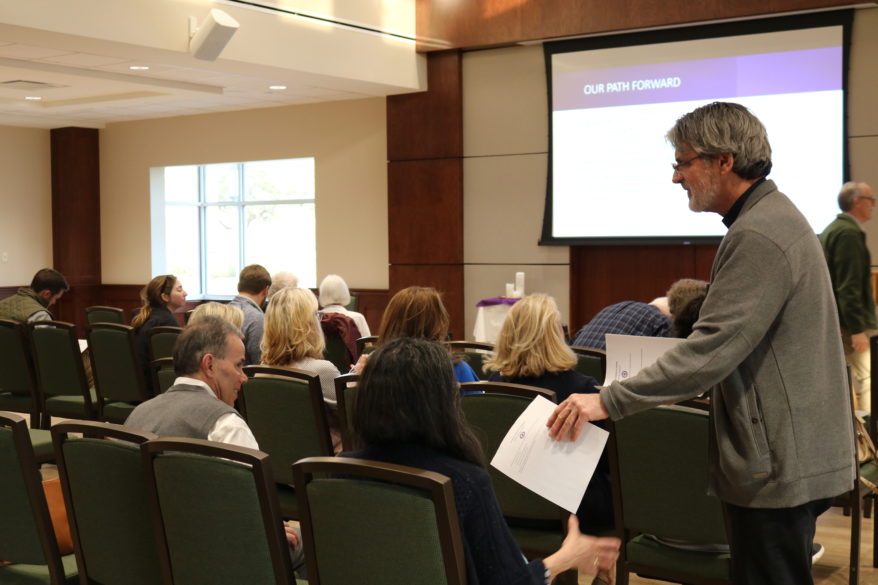
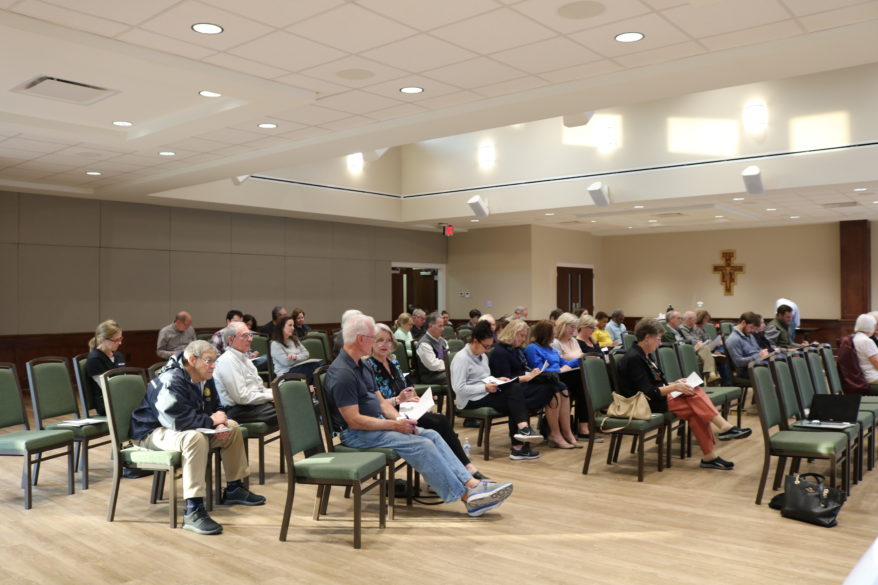
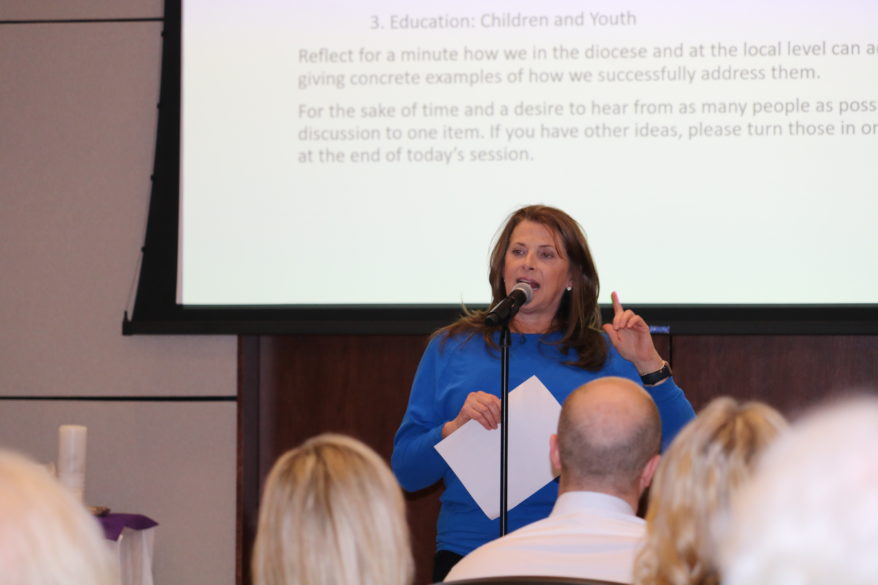
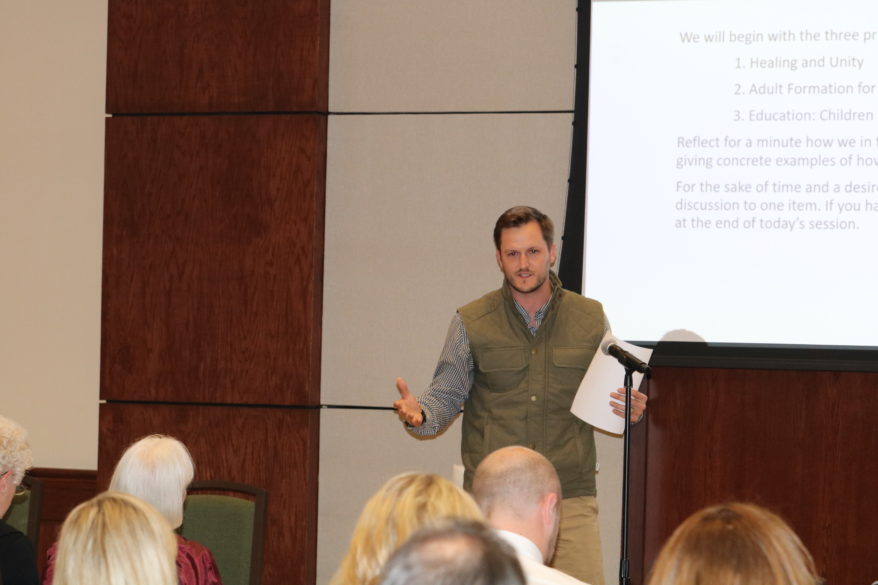
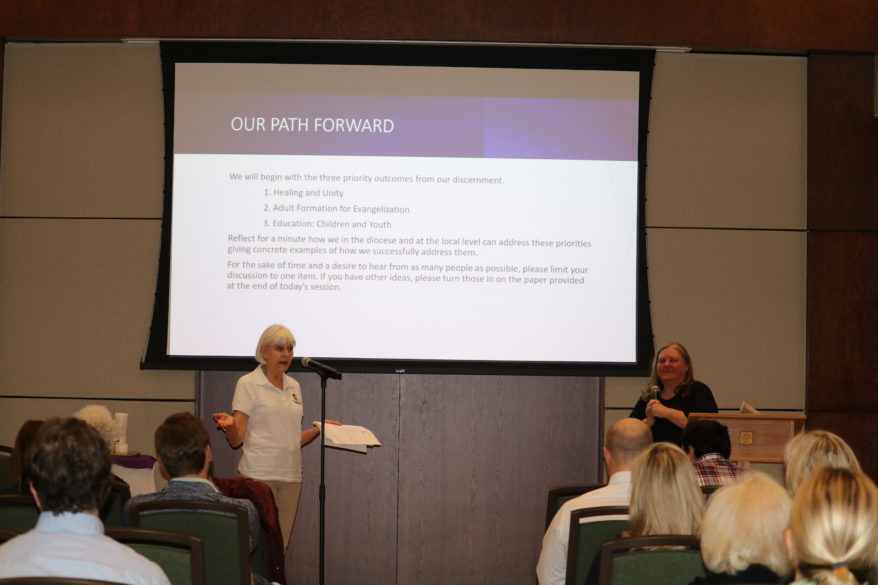

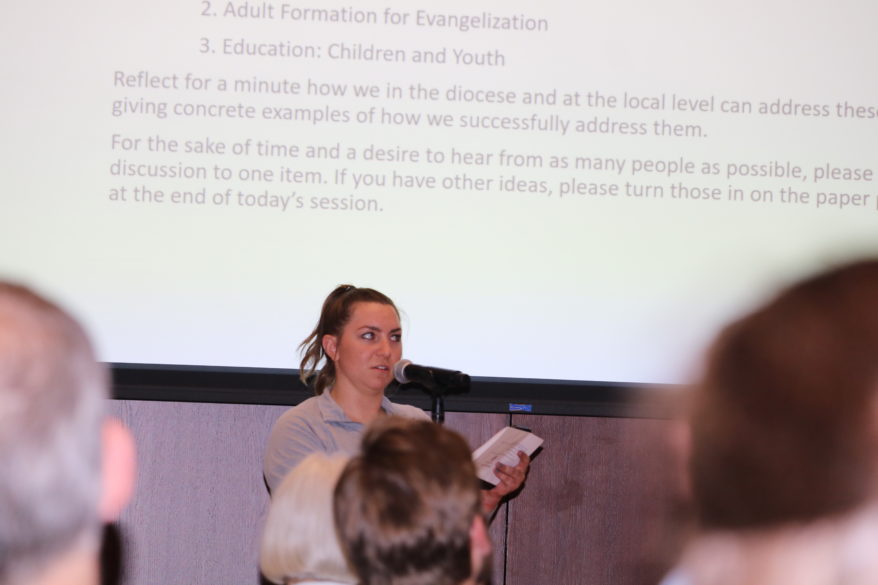
From the Archives
By Mary Woodward
JACKSON – This week we are journeying back to Civil War times in analyzing the current situation in the world. In no way would I equate the motives of the Civil War to that of Putin’s invasion of Ukraine, but the siege tactics are classic military maneuvers that date back centuries.
In July 1863, the city of Vicksburg fell after a 47-day siege by General Ulysses S. Grant. Forty miles to the east, General William Sherman arrived at Jackson to implement a similar siege strategy.
My knowledge of Civil War tactics may not be precisely accurate, but we read in Bishop William Henry Elder’s diary about the Civil War’s destruction to Jackson and its only Catholic church – St. Peter. Bishop Elder’s writing style is more phrase-based than in complete sentences, but it is easily followed.
The original St. Peter Church was located about five blocks south and east from its current location on the corner of West and Amite Streets in the center of the capitol city. In May 1863, it along with the school and rectory was burned to the ground by Federal troops exiting Jackson. The troops were ordered to burn tar in a storage shed adjacent to the church according to the diary and despite the pleas of Father Orlandi, the pastor, to move the tar into the street away from the church, the shed was set ablaze and with it all the parish buildings.

We read in the diary marked May 21: “Father Orlandi begged for fifteen minutes to roll the barrels into the street where they would burn with less danger to the church, but the officer would allow of no delay and the shed was so close that there was no possibility of saving the church, etc. – All the ornaments and furniture were removed to safety. Dr. Hewet, surgeon in the Federal Army, brother to Rev. Dr. Hewet of the Paulists, himself a convert, endeavored also to obtain the respite, and when he could not succeed, he helped to save the things.”
Two months later, on July 18-20, Bishop Elder is able finally to visit Jackson and this is what he reports: July 18: “General Crosby, Commanding the Rear Guard, first refused to let me go to Jackson. When I explained that I wanted to see to the Sisters [of Mercy], he agreed to let me go.”
“Left Brandon at 4 p.m. for Jackson. Some cotton burned along the road and some burning [still]. Federal Pickets allowed me to go to the hospital – the field hospital of the Confederates during the siege of Jackson: attended still by Confederate Surgeons – although in the Federal Lines. Dr. Hinckley – son of Lawyer Hinckley of Baltimore has charge.”
July 19, Sunday – “No Mass. Spent the day visiting the hospital. The Federal Soldiers wounded here were moved – nearly all of them to town today.”
July 20 – “Continued in the hospitals till dinner time. The doctors here have been very polite to me.”
“After dinner drove into Jackson – trestle work burning – rails torn up – crossed river on the pontoon bridge of the Federals. In the warm ashes and ruins at every step. Melancholy desolation. Found Father Orlandi at Mrs. O’Connor’s house. Sad meeting.”
“The chapel he had fitted up with so much labor – in the Spengler’s Saloon – has been burned – the chalice and crucifix stolen – though recovered broken – bought by a Catholic Federal soldier and brought back to Father Orlandi. Father Orlandi’s house was robbed of all his clothes and the provisions he had laid up.
“He is now living on Army rations – he has no place to cook them. Today he has eaten only some crackers.”
“We went to General Ewing’s quarters to find a safe place for my horse and buggy. General Ewing is a Catholic from Ohio. He promised to see that the Sisters’ Convent in Vicksburg would be preserved unhurt for them. I could not talk much, I felt myself choaked with sadness.”

I share these moments to bring us back to the notion that no matter the era, the destruction of war only hurts those caught in the middle. The human toll – both physical and spiritual – is immeasurable.
Those trying to bring aid and relief to the people of Ukraine in the midst of the chaos and savage violence are much like the wandering Bishop Elder trying to minister to those he encountered in field hospitals and burned-out towns.
Now as we are spectators to a war unfolding before us, let us pray for peace and hope for a miracle.
Pope Francis is consecrating Ukraine and Russia to the Immaculate Heart of Mary on March 25, the Feast of the Annunciation of Our Lord. Here is a snippet of the prayer he is using:
Therefore, O Mother, hear our prayer.
Star of the Sea, do not let us be shipwrecked in the tempest of war.
Ark of the New Covenant, inspire projects and paths of reconciliation.
Queen of Heaven, restore God’s peace to the world.
Eliminate hatred and the thirst for revenge, and teach us forgiveness.
Free us from war, protect our world from the menace of nuclear weapons.
Queen of the Rosary, make us realize our need to pray and to love.
Queen of the Human Family, show people the path of fraternity.
Queen of Peace, obtain peace for our world.
Amen.
(Mary Woodward is Chancellor and Archivist for the Diocese of Jackson.)